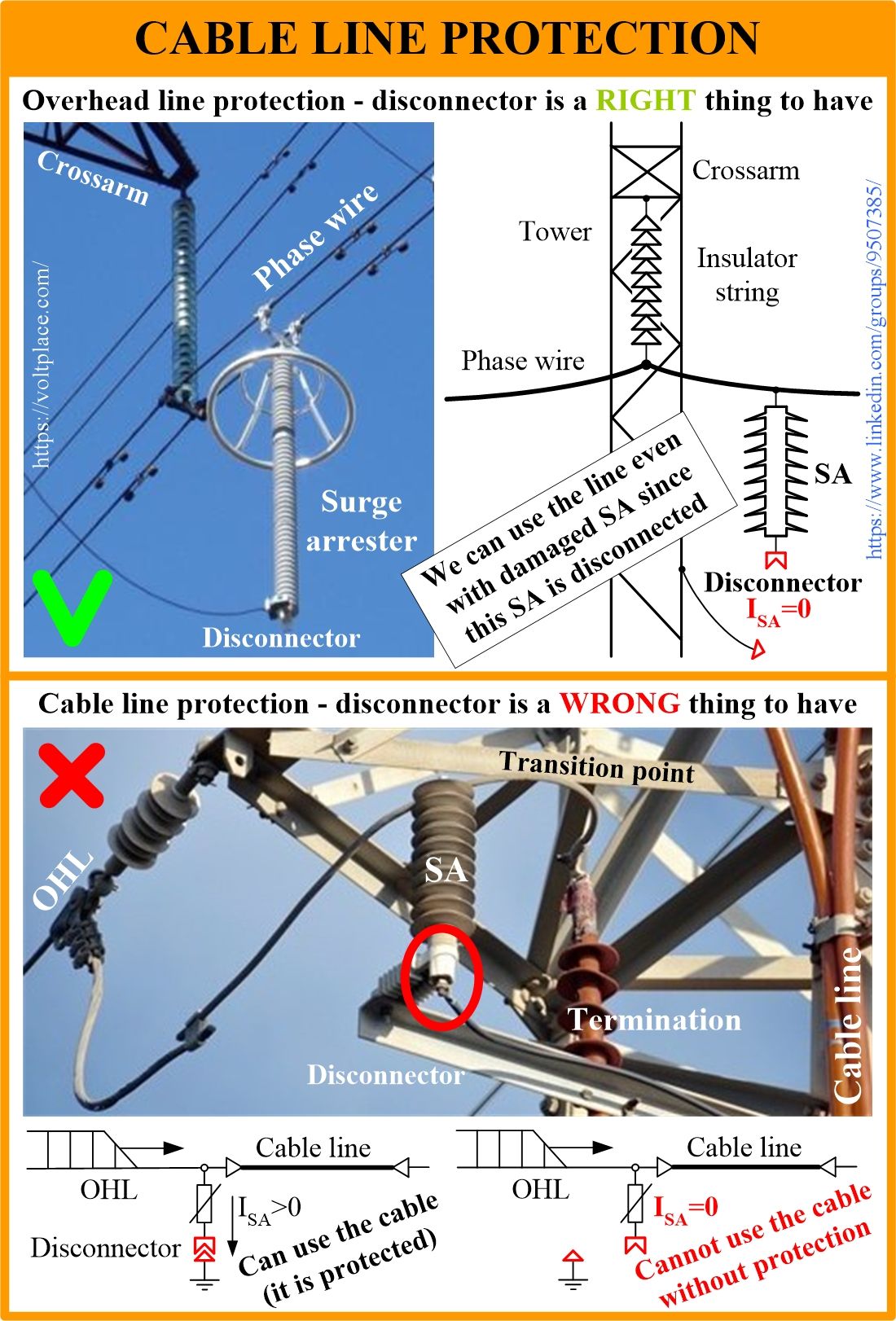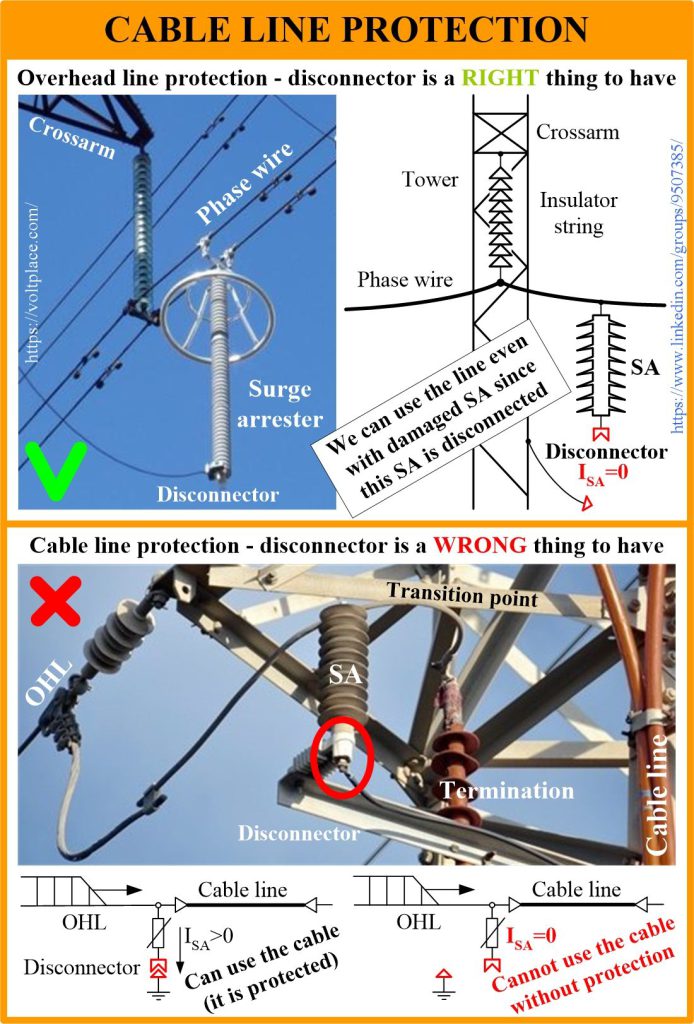
Cable line protection
One of the ways to reduce lightning outages of overhead lines (OHL) is to place surge arresters (SA) on problematic sections of the line. However, there is always a risk of damage to the SA itself which creates a new problem. For example, damage can happen for one of the following reasons:
✅ Lightning can transfer an electric charge of up to 50 C, whereas SA is designed to pass at best 5 C, after which it requires some time to cool down. Thus, in the case of a direct lightning discharge to the phase wire, there is a certain risk for SA.
✅ Low production quality.
✅ Careless transportation and installation.
✅ Vandalism (shooting from the ground etc.).

If there is an SA connected to the OHL using so-called “disconnector”, and such an SA is damaged, the following sequence of events will occur:
1️⃣ The SA is damaged (for one reason or another);
2️⃣ There is a short circuit on the line (via a damaged SA) and the relay protection gives the command to disconnect the line from the network.
3️⃣ While the OHL is still in operation, the disconnector disconnects the SA.
4️⃣ An attempt to reconnect the line will be successful (since SA is disconnected).
5️⃣ In the future, during the reclosure of the OHL, the damaged SA will be identified by the disconnected cable and will be replaced at a convenient opportunity.
The disconnector is used on the OHL only because the line is “iron with glass”, and all this can work even without surge protection. There are at least two ways to install a disconnector:
✅ OHL 110-750 kV uses vertically positioned SA and a disconnector in a grounding lead, between lower flange of the SA and tower body (see upper photo).
✅ OHL 6-35 kV uses device which consists of vertically positioned SA mounted on a horizontal insulator, and the disconnector which is fixed on the lower flange of the SA (see bottom photo).
Unfortunately, there are cases when SA are equipped with disconnector where this should never be done. For example, sometimes we can find a combination “SA+disconnector” at the transition point of mixed cable-overhead line. The bottom photo shows exactly the case when the SA with a disconnector was mistakenly used at the 35 kV transition tower.
If such an SA is damaged, the following sequence of events will occur:
1️⃣ The SA is damaged (for one reason or another);
2️⃣ There is a fault on the line (via a damaged SA) and the relay protection gives the command to disconnect the line from the network.
3️⃣ While the OHL is still in operation, the disconnector disconnects the SA.
4️⃣ An attempt to reconnect the line will be successful (since SA is disconnected).
5️⃣ The cable line (termination etc.) remains without proper surge protection, for an unpredictably long time, until the disconnected SA is noticed and changed.
Point 5 is very dangerous for the cable line. Therefore, at transition points, we use only those SA which do not have a disconnector.
You can discuss this and many other issues in LinkedIn cable group. Your opinion is important for the cable industry! Thank you
